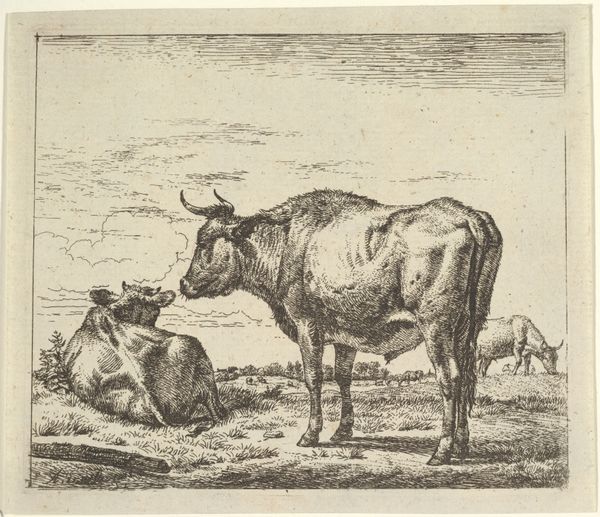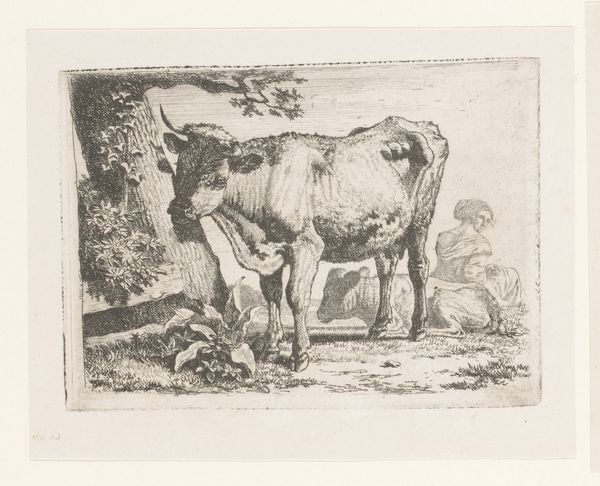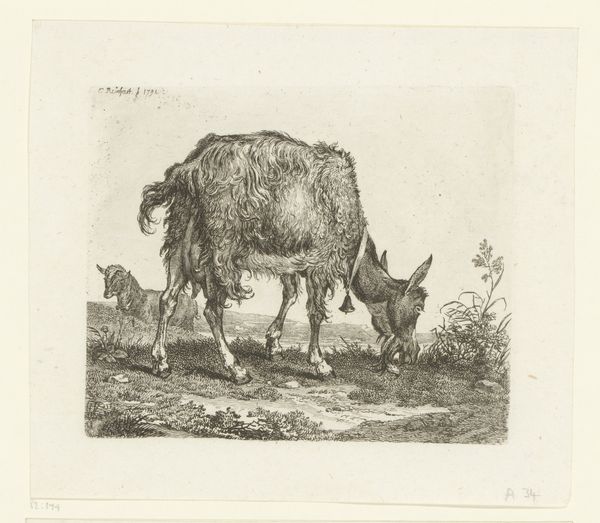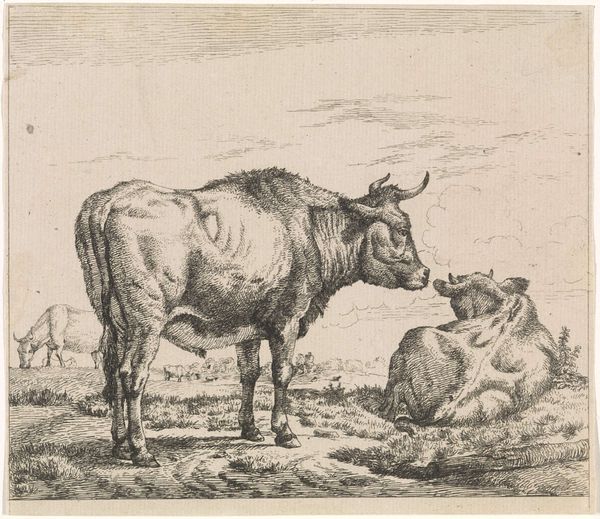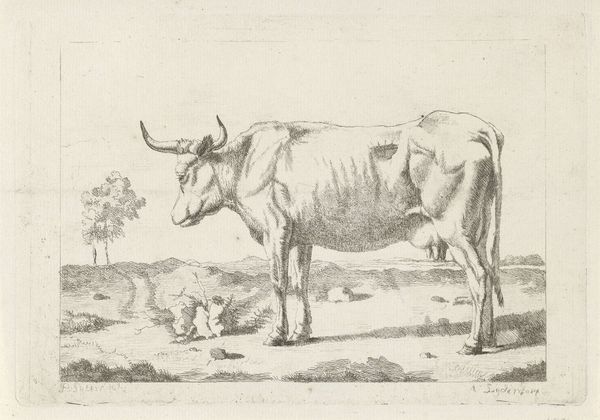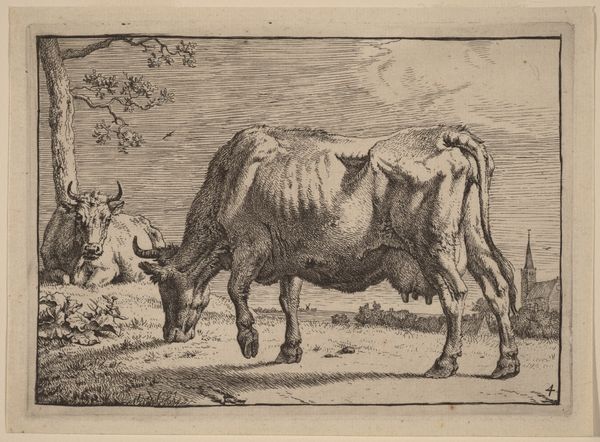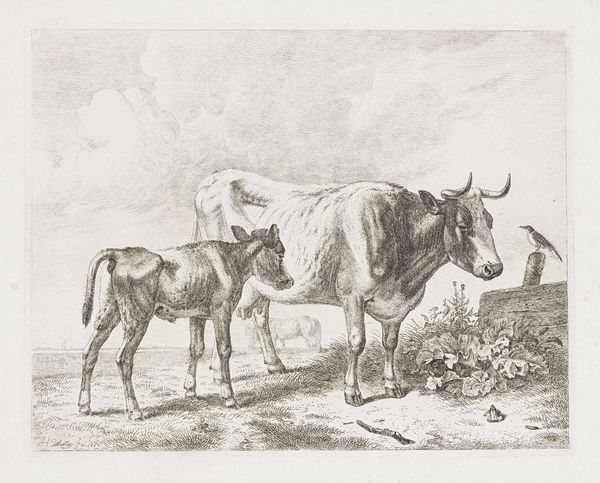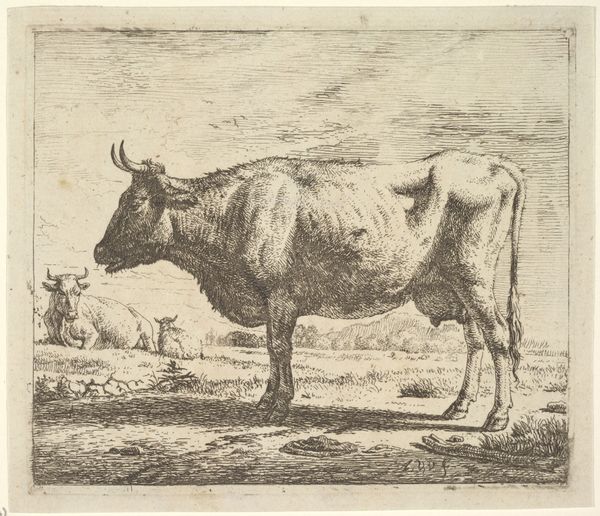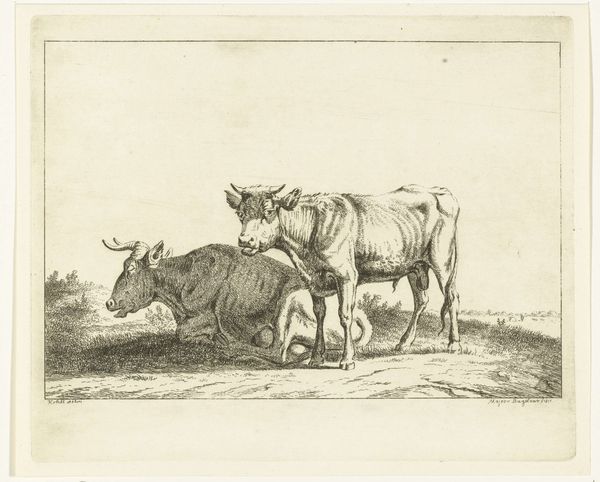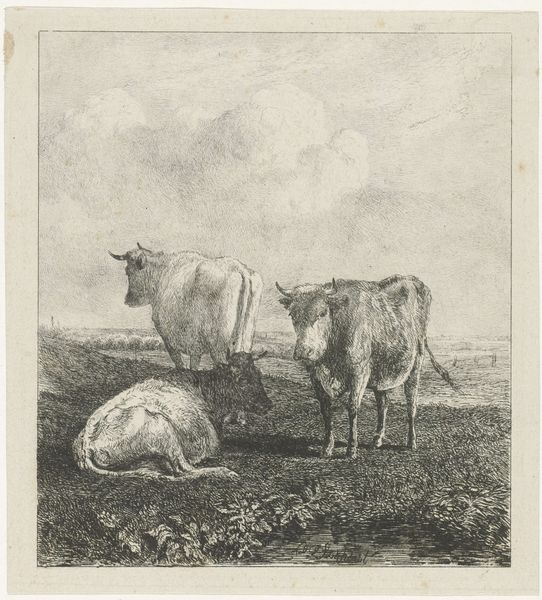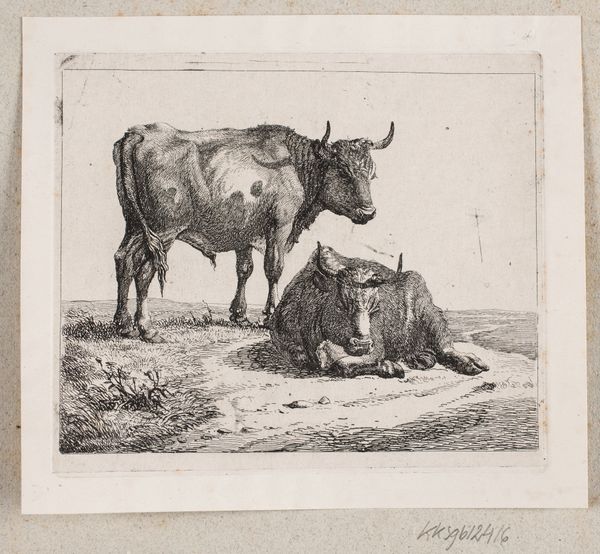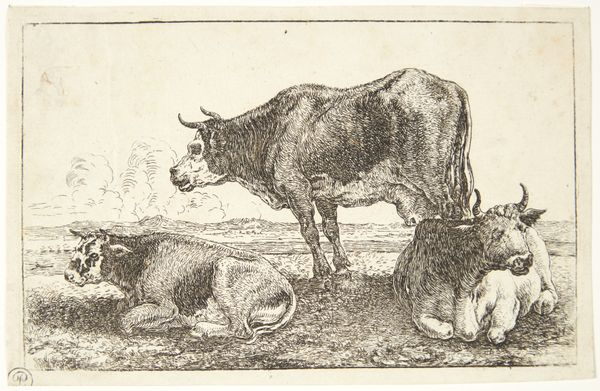
print, etching
# print
#
etching
#
old engraving style
#
landscape
#
form
#
line
#
genre-painting
#
realism
Dimensions: height 155 mm, width 221 mm
Copyright: Rijks Museum: Open Domain
Curator: Here we have "Cows and a Calf with Bell around the Neck", an etching created sometime between 1762 and 1829 by Jean Louis Demarne. Editor: My first thought is how bucolic it is, like a glimpse into an older, simpler way of life. The lines create a soft, almost hazy feel, very different from the sharp realism we often see today. Curator: Absolutely, and that soft focus has a historical root. The etching medium, with its reliance on line and texture, allows for a particular type of representation. Demarne uses it to depict cows, a calf with a bell, and a rural landscape scene that speaks volumes about the era's agrarian values. Think about the symbolism: cattle representing prosperity and nourishment. The bell around the calf's neck? A symbol of domestication and control. Editor: It also brings up questions of labor, doesn't it? We're invited to appreciate the 'peaceful' scene, but who is benefiting from this labor, and at what cost? Who owns these cows? We see figures in the background. Are they laborers or landowners? Curator: Those background figures introduce us to questions of the era's social structures, with their subtle cues to inherited tradition and implicit economic stratifications. Demarne uses line not just to depict forms, but also to convey these loaded pastoral signifiers. Note also how this representation differs drastically from heroic representations of labour one may expect from a state commission. The very scale suggests a focus on genre instead. Editor: The choice of subject really underscores that genre focus. It's an intimate look, almost a celebration of everyday life – even if, for whom? And the 'realism' feels carefully constructed to reinforce that specific idealized narrative. Curator: Indeed. Even within its genre, the artwork hints at greater narratives surrounding the period, revealing how symbols operate within a system of cultural and political exchange. Editor: Ultimately, this is where art historical interpretation meets contemporary critical inquiry—a process that ideally invites continued dialogues. Curator: Precisely so.
Comments
No comments
Be the first to comment and join the conversation on the ultimate creative platform.
